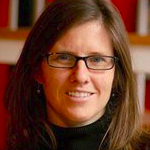Patient care has always been vital to healthcare. At the same time, patient engagement has always been frighteningly low. Patients have been passive players in their own care, depending on and assuming that 'doctor knows best.'
Today’s patients, however, are becoming consumers of healthcare. They are more informed about their options and with more information at their disposal they are becoming more vocal than ever about their expectations for care.
In the past, gaining access to medical records was difficult at best. Now, as paper records are being replaced with electronic data, patients will have an opportunity to take greater control of their healthcare records.
One vocal advocate for patient engagement is Regina Holliday and she has a unique approach. Regina uses art to share her message. She began her mission by painting a series of murals that depicted the need for clarity and transparency in medical records.
She was inspired to do this after witnessing her husband Frederick Allen Holliday II struggle to get appropriate care during 11 weeks of continuous hospitalization at five different facilities. After his death from kidney cancer on June 17, 2009, she began painting. The finished mural is titled “73 cents" and depicts the Holliday family’s journey through the medical system.
Now, Regina paints at medical conventions throughout the US. Her paintings present a patient’s view, and she hopes others will be inspired by the real need for engagement in their own healthcare. She hopes others will recognize the power of healthcare IT to foster improved communication and care coordination.
Regina explains her calling in her blog:
“The core of my advocacy mission is to provide patients and caregivers access to read and contribute to their electronic health record in a real-time fashion--and thereby be a integral part of the health care team. I decided to focus my advocacy in this direction because I thought it was most likely the greatest opportunity to change the current paradigm of patient care. Why not have patient portals in the EMR? Why not involve patients in EMR workflow design? It has not yet become a habit to leave us out. Health Information Technology is a pry bar or wedge that patients can use to open up healthcare silos and join the conversation.”
At HIMMS12, Regina designed a painted jacket as part of her Walking Gallery. Titled ‘It’s Hosted,’ the jacket is inscribed: “Over 50% of Physicians are using Electronic Medical Records.” She hopes to remind attendees that meaningful use (MU) requirements of new electronic medical records programs intend to improve patient care and save lives, and make it easier for people to be and stay well.

Surgeon General Regina Benjamin and Regina Holliday at HIMSS 12 photo by Mark Scrimshire
At the event this year, Regina was able to hear the mandate announced for patients to be given the opportunity to view, download, and transmit their medical records online. She said, "It makes absolutely the most sense to do a portal. If a portal's in place, you don't have to worry about 50% of requests fulfilled--you open it up to everyone. Anybody who goes into your facility has the ability to get it through a portal."
Regina was recently featured in HealthcareIT News spotlight, Need to Know: 5 Women in Health IT, which included women who were being recognized for their individual accomplishments in the areas of health IT.
Regina Holliday (@ReginaHolliday) has set up a group on Flickr where people can add photos that reflect a patient’s perspective on healthcare and medical treatment. Others can use the photos in their own works free for use in a non-commercial venue.






4 Comments